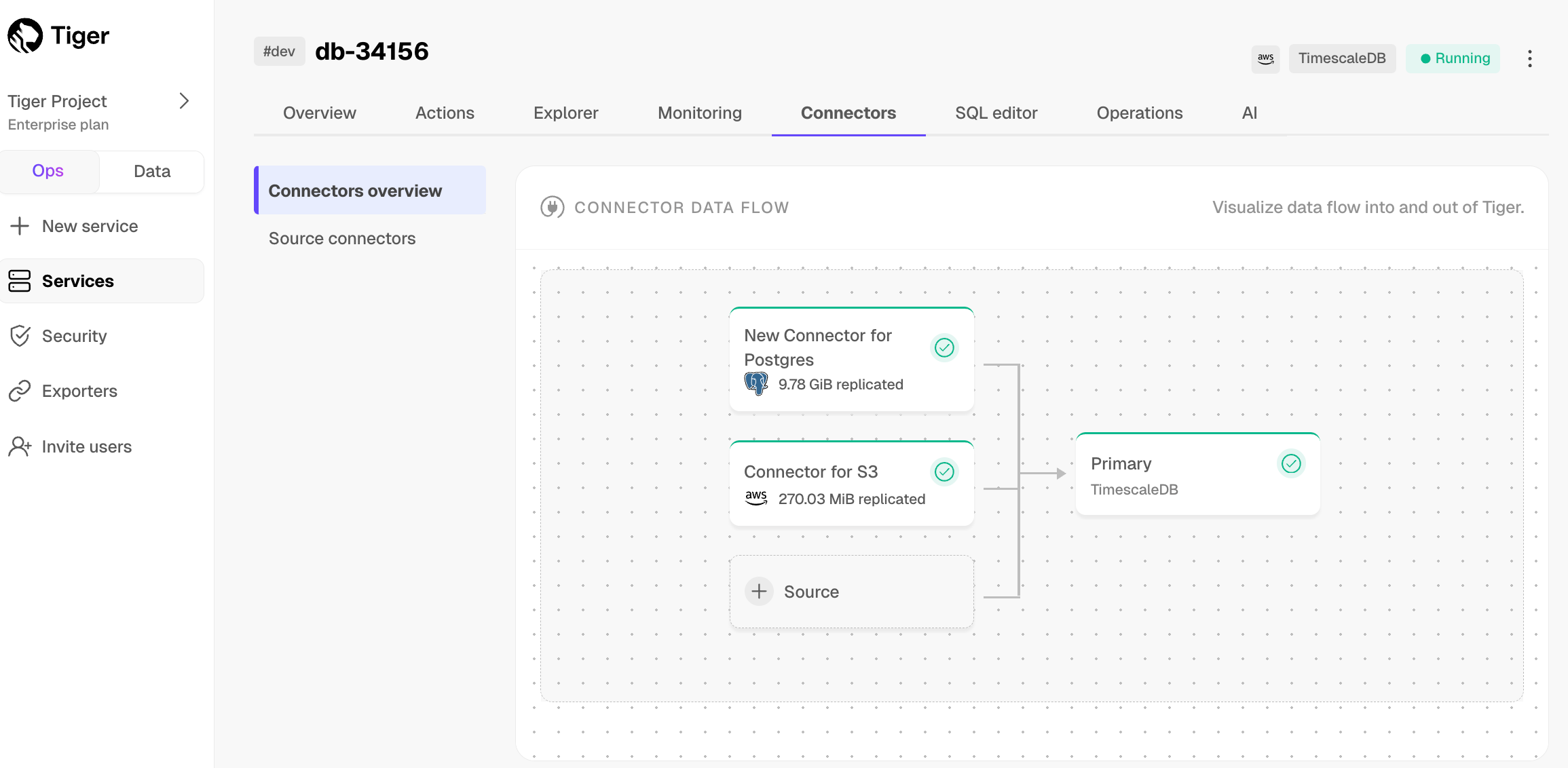Tiger Cloud: Performance, Scale, Enterprise
Self-hosted products
MST
You use the source Postgres connector in Tiger Cloud to synchronize all data or specific tables from a Postgres database instance to your service, in real time. You run the connector continuously, turning Postgres into a primary database with your service as a logical replica. This enables you to leverage Tiger Cloud’s real-time analytics capabilities on your replica data.

The source Postgres connector in Tiger Cloud leverages the well-established Postgres logical replication protocol. By relying on this protocol, Tiger Cloud ensures compatibility, familiarity, and a broader knowledge base—making it easier for you to adopt the connector and integrate your data.
You use the source Postgres connector for data synchronization, rather than migration. This includes:
Copy existing data from a Postgres instance to a Tiger Cloud service:
Copy data at up to 150 GB/hr.
You need at least a 4 CPU/16 GB source database, and a 4 CPU/16 GB target service.
Copy the publication tables in parallel.
Large tables are still copied using a single connection. Parallel copying is in the backlog.
Forget foreign key relationships.
The connector disables foreign key validation during the sync. For example, if a
metricstable refers to theidcolumn on thetagstable, you can still sync only themetricstable without worrying about their foreign key relationships.Track progress.
Postgres exposes
COPYprogress underpg_stat_progress_copy.
Synchronize real-time changes from a Postgres instance to a Tiger Cloud service.
Add and remove tables on demand using the Postgres PUBLICATION interface
.
Enable features such as hypertables, columnstore, and continuous aggregates on your logical replica.
Keywords
Found an issue on this page?Report an issue or Edit this page
in GitHub.